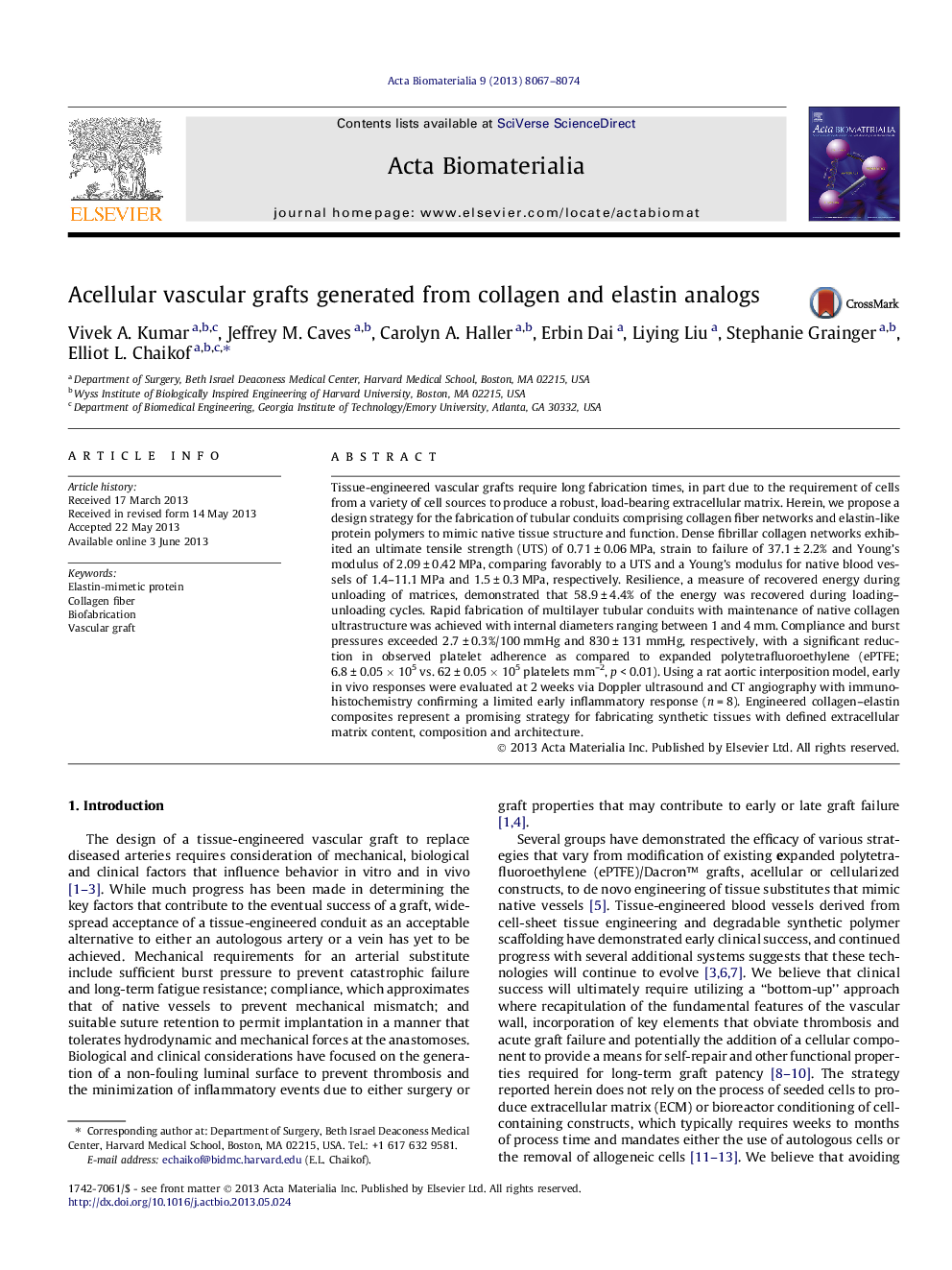| Article ID | Journal | Published Year | Pages | File Type |
|---|---|---|---|---|
| 10159766 | Acta Biomaterialia | 2013 | 8 Pages |
Abstract
Tissue-engineered vascular grafts require long fabrication times, in part due to the requirement of cells from a variety of cell sources to produce a robust, load-bearing extracellular matrix. Herein, we propose a design strategy for the fabrication of tubular conduits comprising collagen fiber networks and elastin-like protein polymers to mimic native tissue structure and function. Dense fibrillar collagen networks exhibited an ultimate tensile strength (UTS) of 0.71 ± 0.06 MPa, strain to failure of 37.1 ± 2.2% and Young's modulus of 2.09 ± 0.42 MPa, comparing favorably to a UTS and a Young's modulus for native blood vessels of 1.4-11.1 MPa and 1.5 ± 0.3 MPa, respectively. Resilience, a measure of recovered energy during unloading of matrices, demonstrated that 58.9 ± 4.4% of the energy was recovered during loading-unloading cycles. Rapid fabrication of multilayer tubular conduits with maintenance of native collagen ultrastructure was achieved with internal diameters ranging between 1 and 4 mm. Compliance and burst pressures exceeded 2.7 ± 0.3%/100 mmHg and 830 ± 131 mmHg, respectively, with a significant reduction in observed platelet adherence as compared to expanded polytetrafluoroethylene (ePTFE; 6.8 ± 0.05 Ã 105 vs. 62 ± 0.05 Ã 105 platelets mm-2, p < 0.01). Using a rat aortic interposition model, early in vivo responses were evaluated at 2 weeks via Doppler ultrasound and CT angiography with immunohistochemistry confirming a limited early inflammatory response (n = 8). Engineered collagen-elastin composites represent a promising strategy for fabricating synthetic tissues with defined extracellular matrix content, composition and architecture.
Related Topics
Physical Sciences and Engineering
Chemical Engineering
Bioengineering
Authors
Vivek A. Kumar, Jeffrey M. Caves, Carolyn A. Haller, Erbin Dai, Liying Liu, Stephanie Grainger, Elliot L. Chaikof,
